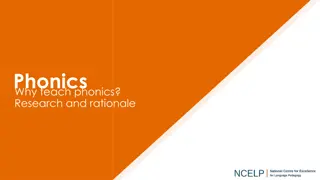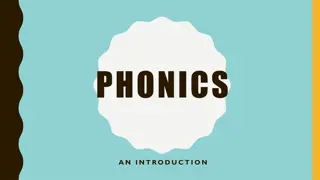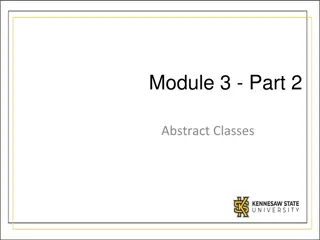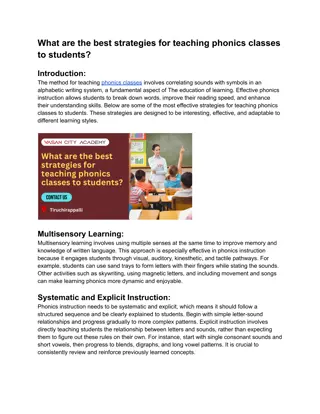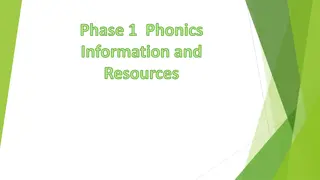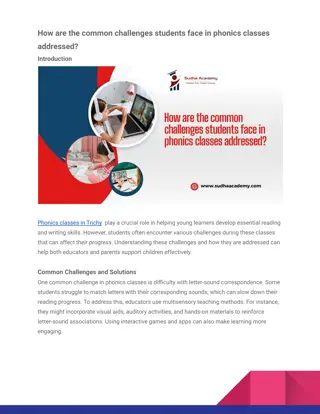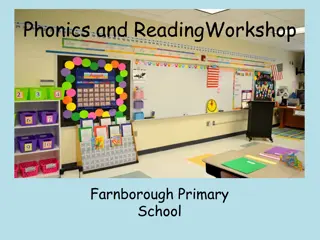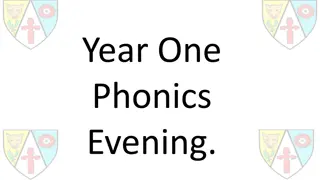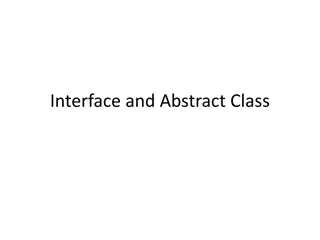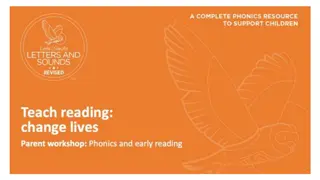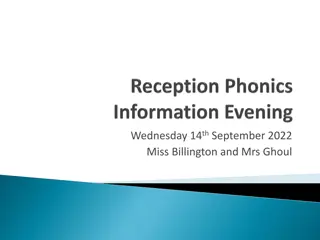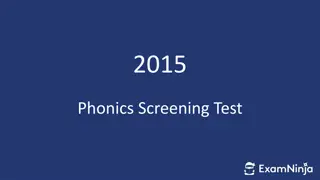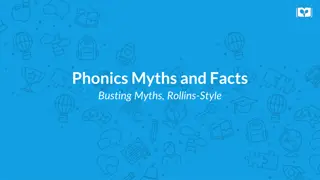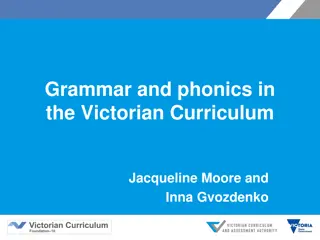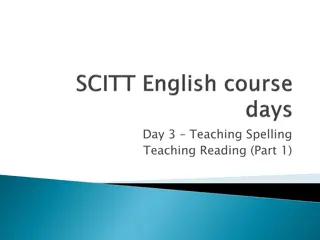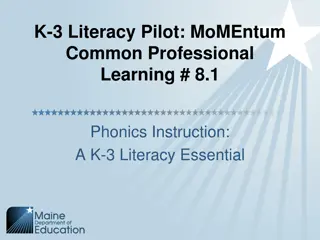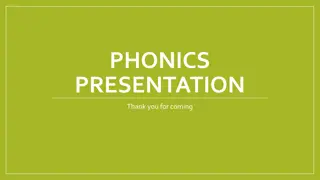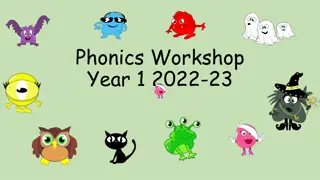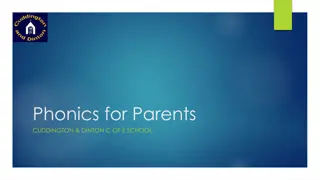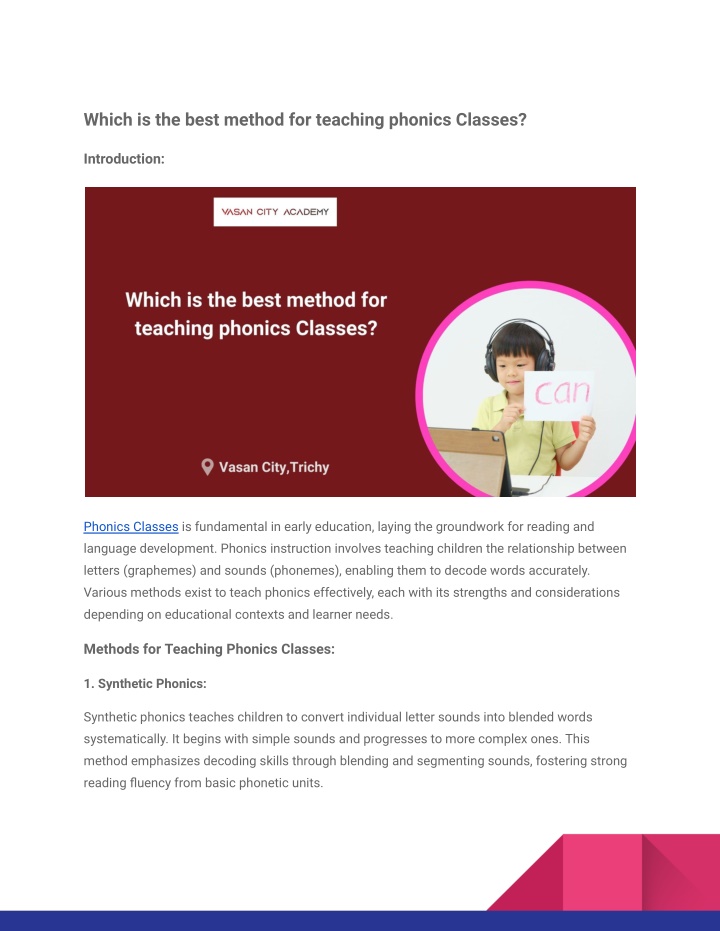
_Which is the best method for teaching phonics Classes_
Phonics Classes is fundamental in early education, laying the groundwork for reading and language development. Phonics instruction involves teaching children the relationship between letters (graphemes) and sounds (phonemes), enabling them to decode
Download Presentation

Please find below an Image/Link to download the presentation.
The content on the website is provided AS IS for your information and personal use only. It may not be sold, licensed, or shared on other websites without obtaining consent from the author. If you encounter any issues during the download, it is possible that the publisher has removed the file from their server.
You are allowed to download the files provided on this website for personal or commercial use, subject to the condition that they are used lawfully. All files are the property of their respective owners.
The content on the website is provided AS IS for your information and personal use only. It may not be sold, licensed, or shared on other websites without obtaining consent from the author.
E N D
Presentation Transcript
Which is the best method for teaching phonics Classes? Introduction: Phonics Classes is fundamental in early education, laying the groundwork for reading and language development. Phonics instruction involves teaching children the relationship between letters (graphemes) and sounds (phonemes), enabling them to decode words accurately. Various methods exist to teach phonics effectively, each with its strengths and considerations depending on educational contexts and learner needs. Methods for Teaching Phonics Classes: 1. Synthetic Phonics: Synthetic phonics teaches children to convert individual letter sounds into blended words systematically. It begins with simple sounds and progresses to more complex ones. This method emphasizes decoding skills through blending and segmenting sounds, fostering strong reading fluency from basic phonetic units.
2. Analytic Phonics: Analytic phonics starts with whole words or sentences and then breaks them down into their constituent phonetic parts. It focuses on recognizing familiar words and patterns, promoting comprehension through context and meaning rather than isolated phonics rules. 3. Embedded Phonics: Embedded phonics integrates phonics instruction naturally within meaningful reading and writing activities. Teachers highlight phonetic elements as they arise in texts, connecting phonics lessons directly to practical applications in reading and writing. 4. Phonics through Literature: This method uses quality literature to teach phonics concepts within engaging stories. Children encounter phonetic patterns and rules organically, reinforcing their understanding through enjoyable reading experiences. 5. Onset and Rime Approach: This approach focuses on teaching common rime patterns (e.g., -at, -an, -ell) and pairing them with different onsets (initial consonants). By recognizing these patterns, students can decode and spell many words, facilitating rapid reading development. 6. Phonemic Awareness Activities: Before diving into phonics, phonemic awareness activities help children develop auditory discrimination skills. These activities include rhyming, segmenting, blending, and manipulating sounds, laying a strong foundation for phonics instruction. 7. Multi-Sensory Phonics Approach: This approach engages multiple senses visual, auditory, and kinesthetic to reinforce phonics concepts. Students trace letters in sand, manipulate letter cards, and chant rhymes, enhancing memory retention and understanding through hands-on activities. 8. Word Families and Word Walls:
Teaching word families (e.g., -at, -op, -ig) and using word walls with high-frequency words help children recognize patterns and build a sight vocabulary. This method supports both decoding skills and fluency in reading. Conclusion: The best method for teaching phonics classes in Trichy depends on various factors, including the age and learning style of students, as well as instructional goals. Synthetic phonics offers a systematic approach to decoding skills, while analytic phonics emphasizes comprehension through context. Embedded phonics integrates learning into real-world applications, and phonics through literature connects phonics instruction with enjoyable reading experiences. The onset and rime approach and multi-sensory methods cater to different learning modalities, enhancing engagement and retention. Ultimately, a balanced approach that combines different phonics strategies tailored to student needs ensures comprehensive literacy development and prepares students for lifelong reading success. For more details: Call us: +91 7010975193 Please mail us: vasancityacadamey@gmail.com Website:https://www.vasancityacademy.com/ Map Location: https://maps.app.goo.gl/rvyh3WQDPJE6D95Q9

